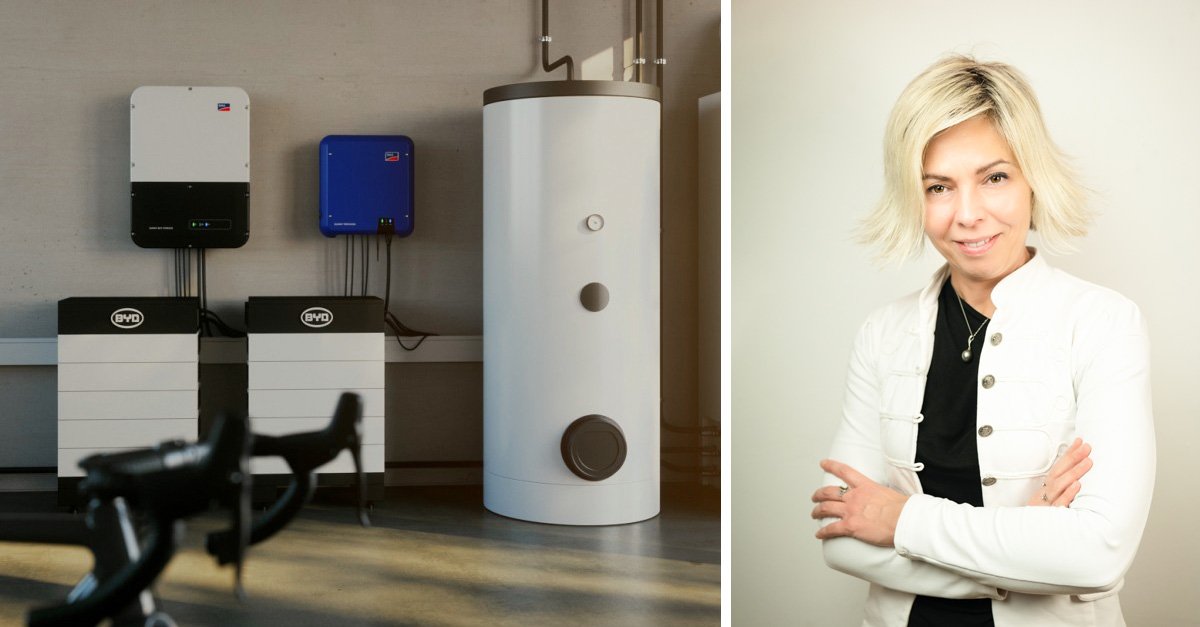Battery-Storage Systems: Nothing Works Without the Right Inverter

Clean electricity supply around the clock without expensive grid expansion – no problem for PV systems combined with battery-storage systems. Intelligent system technology ensures the smooth interaction of PV systems, batteries, the utility grid and loads. SMA storage system expert Dr. Aleksandra-Sasa Bukvic-Schäfer explains why the right battery inverter plays a central role in every storage system.
Sasa, why do we need a battery inverter to operate stationary battery-storage systems after all?

SMA storage system expert Dr. Aleksandra-Sasa Bukvic-Schäfer
A central point here is the conversion of direct current into alternating current and vice versa. The battery can store only direct current, but alternating current is what flows into the utility grid and is required to operate the majority of electrical devices. That means that the battery inverter must function bidirectionally. If the battery is charged from the socket or an AC-coupled PV storage system, it needs to convert alternating current into direct current. If electrical devices are operated from the battery or battery current is fed into the grid, the process works in reverse.
However, PV systems also produce direct current. Is it not possible to feed solar power directly into the battery?
Certain adjustments have to be made here as well. Most of the time, the PV system and the battery work on different voltage levels. The voltage of the PV array depends on its size, but only in rare cases is the voltage of the PV string identical to the voltage of the battery. These different voltages are therefore coupled using a DC/DC converter. The DC/DC converter in the battery inverter adjusts the voltage levels and makes the electricity available in both directions. Another important aspect is the connection of the battery to the grid. The battery inverter also makes the necessary adjustments here. The inverter bridge in the battery inverter is therefore bidirectional, in contrast to the one in the PV inverter.
You often read that the battery inverter also ensures “optimal operation” of the battery. What is behind this?
This is the other important task of the battery inverter. It continuously measures the relevant values of the battery and controls its charge and discharge such that all parameters are adhered to and the battery is “at ease” in operation. If operation of the battery is suboptimal, it will age much more quickly, rendering it unusable earlier than expected and therefore also rapidly uneconomical. For this reason, it is also important for the battery and battery inverter to match perfectly with each other and for the right battery to be used for each application.
Can you please elaborate on this?
Batteries sometimes significantly differ from each other. This is not just about the battery technology — lithium-ion or lead-acid batteries, for instance — and the voltage level, i.e., high or low voltage, but also about the parameters that vary from battery to battery. These include the depth of discharge or the generated power. These parameters are stored in the battery inverter so that they can be taken into account for controlling the battery. They also change due to the constant further development of battery technology. It is also very important to harmonize inverters and batteries at an early stage of the development phase to create an efficient and economical overall system. SMA collaborates closely with leading battery manufacturers for this purpose.
This all sounds very ambitious.
Yes, it is — and it is also incredibly exciting because battery-storage systems will become increasingly important to the electricity supply in the coming years and decades. They ensure that electricity generated from wind and solar energy is available 24/7 and they support grids, forming the backbone of a decentralized and renewable electricity supply. At SMA, we have extensive experience with almost every battery technology and application. We can confidently build on this to promote future developments. I am really excited about it.
Sasa, thank you for the interview.


Hi,
I have 24 PV panels and SB 5000. The grid is 3 phase each 127 V, the SB 5000 is 220 V with feed in on 2 phase. Now I want to install SB storage. So the feed in will also be on 2 phases.
Does the PV work when the grif is off ?
Then I only have feed in on 2 phases.
The SPS of the SB storage should supply 2 phase 220V
Hello Cor,
Please contact our SMA Service for further support via our SMA Online Service Center.
We need more technical details in this case.
Sunny regards
Christiane
I am developing a three-phase off-grid photovoltaic system with Sunny tripower 50 kW, I can connect it to three sunny island 6048 clusters
I have a Sunny Boy 6kw inverter. What battery do you recommend that is compatible with this inverter?
None you need to purchase a sunny island battery inverter.
We are looking for 3ph 1000VDC ,75kw PV grid invertor
Hi Ajay,
Please find SMA contacts for your region here.
Kind regards,
Anke
Hola, Anke, estoy en el programa solarcoins, con SMA.
pero el contador esta siempre a 00000.
Desconozco el motivo
Hello Fernando,
After you have registered, it will take some time before you get your first SolarCoins.
But dont’ worry – no SolarCoin will get lost as they will be awarded retrospectively.
Sunny regards
Christiane